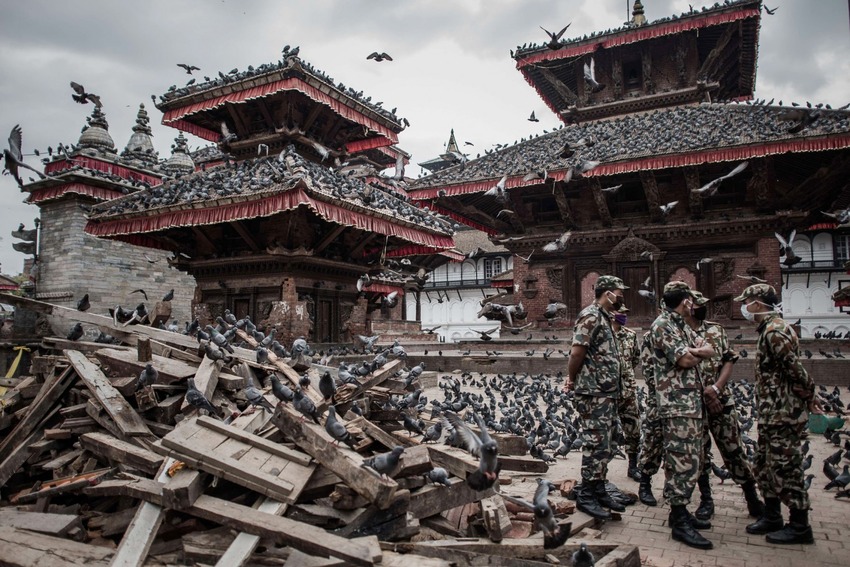In the discourse surrounding disaster preparedness, a critical aspect often overshadowed is the preservation of cultural heritage. The rich tapestry of our global cultural legacy, encompassing historic sites, artifacts, and traditions, faces substantial vulnerabilities during natural and man-made disasters. This article seeks to unveil the hidden challenge of safeguarding our cultural heritage in the wake of calamities, shedding light on the often-overlooked consequences and exploring innovative approaches and global initiatives aimed at protecting this invaluable inheritance.
Vulnerabilities of Cultural Heritage:
Cultural heritage, spanning from ancient monuments to indigenous practices, is at risk of irreversible damage or loss when disasters strike. Earthquakes, floods, wildfires, and conflict zones pose unique threats to structures and traditions that have withstood the test of time. From the crumbling ruins of historic temples to the erosion of traditional craftsmanship, disasters jeopardize the tangible and intangible aspects of our cultural heritage. Case studies from around the world underscore the urgency of acknowledging these vulnerabilities and implementing proactive measures to ensure the survival of our shared cultural treasures.
Innovative Technologies for Preservation:
In the face of these challenges, technological advancements emerge as powerful allies in cultural heritage preservation. Cutting-edge technologies such as 3D scanning, virtual reality, and digital archiving are increasingly employed to document and protect cultural artifacts. 3D scanning allows for the creation of highly accurate digital replicas of monuments and artifacts, providing a comprehensive record that can aid in reconstruction efforts post-disaster. Virtual reality offers immersive experiences, allowing individuals to explore cultural sites virtually and contribute to awareness and education. Digital archiving ensures that even if physical artifacts are lost, their digital counterparts can persist, serving as a testament to our cultural legacy.
Moreover, the application of satellite imagery and remote sensing technologies has become instrumental in monitoring and assessing the condition of cultural sites. These tools enable rapid response and aid in identifying potential risks to heritage structures, allowing for timely intervention. The utilization of innovative technologies not only aids in disaster preparedness but also contributes to ongoing conservation efforts, allowing for the creation of comprehensive databases and resources that can be invaluable in the aftermath of disasters.
Community Engagement and Cultural Resilience:
Cultural resilience plays a pivotal role in the protection of cultural heritage during disasters. Engaging local communities in the preservation of their cultural assets fosters a sense of ownership and responsibility. Initiatives that integrate traditional knowledge with modern conservation practices showcase the potential for a holistic and sustainable approach. By involving communities in the decision-making processes related to heritage preservation, a more inclusive and adaptive strategy emerges.
The concept of cultural resilience extends beyond the physical preservation of artifacts to the continuity of intangible cultural practices. Traditional knowledge and skills passed down through generations are at risk of being lost during disasters. Hence, efforts to document and transmit these intangible aspects of cultural heritage become paramount. Collaborative projects that empower communities to actively participate in the protection of their cultural identity not only strengthen their resilience but also contribute to the sustainable safeguarding of our diverse global heritage.
Global Initiatives and Cross-Cultural Collaboration:
International efforts and cross-cultural collaboration are essential components of a comprehensive strategy for cultural heritage preservation. Organizations, researchers, and governments worldwide are recognizing the need for collective action to protect cultural heritage on a global scale. Initiatives like UNESCO’s World Heritage Centre work towards creating networks, sharing expertise, and developing strategies that transcend borders. Collaborative projects involving experts from different cultures and disciplines bring diverse perspectives to the table, enriching the collective knowledge and enhancing the effectiveness of preservation efforts.
These global initiatives not only focus on mitigating the impact of disasters on cultural heritage but also address the root causes of vulnerability. Climate change, armed conflict, and unsustainable development practices are identified as contributors to the endangerment of cultural heritage, necessitating a holistic and interdisciplinary approach. By fostering cross-cultural collaboration, the global community can work towards building a resilient and interconnected network dedicated to the protection of our shared human history.
Educating for Cultural Preparedness:
As a final consideration, the integration of cultural preparedness into disaster management education and policies is imperative. Raising awareness about the significance of cultural heritage, both tangible and intangible, is the first step towards fostering a sense of responsibility and ownership within communities. Educational programs that emphasize the importance of preserving cultural diversity and heritage in the face of disasters contribute to a more informed and resilient society.

